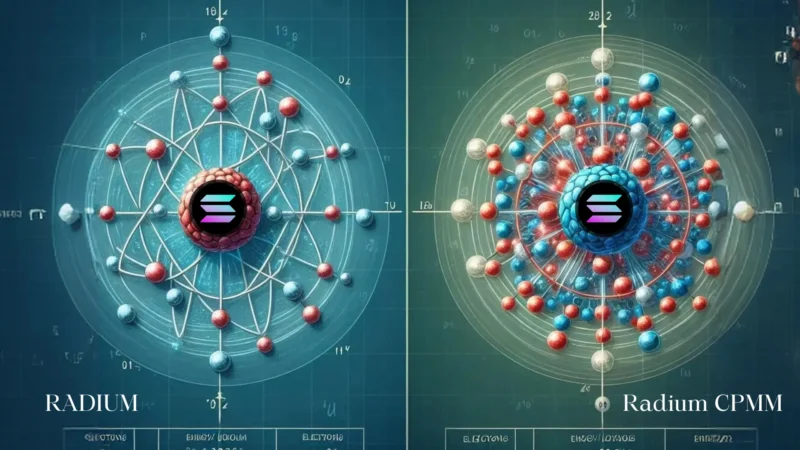Blockchain Layers: Their Working and Why They Matter For Web 3.0

Blockchain technology is one of the most revolutionary innovations of the 21st century and consists of different blockchain layers. It is based on a distributed ledger that records and verifies transactions and assets without intermediaries, ensuring transparency, security, and efficiency.
However, blockchain technology is not a monolithic entity, but rather a complex system composed of different blockchain layers that perform different functions and interact. Understanding the blockchain layers is essential to grasp how blockchain technology works, what challenges it faces, and what solutions it offers for Web 3.0, the next generation of the internet that is based on decentralized, peer-to-peer, and user-owned technologies.
In this article, we will explain the main blockchain layers how they affect the blockchain ecosystem, and why they matter for Web 3.0. We will cover the following topics:
Table of Contents
What are Blockchain Layers?
Blockchain technology is revolutionizing data storage and transfer, but its architecture can be complex. It’s crucial to understand its layered structure to grasp its full potential. There are different ways to categorize the layers of blockchain technology, but one of the most common and simple frameworks is to divide them into three main layers: layer 0, layer 1, and layer 2.
Layer 0: The infrastructure Layer
Layer 0 Functions & Benefits vs. Challenges
Layer 0 is the most basic and fundamental layer of blockchain technology, which provides the physical and logical infrastructure on which multiple blockchains can be built and connected. Layer 0 consists of the hardware, software, and network components that enable the transmission, storage, and processing of data across the blockchain network.
Layer 1: The Protocol Layer
Layer 1 Functions & Benefits vs. Challenges
Layer 1 is the layer that defines the rules and mechanisms of a specific blockchain, such as Bitcoin, Ethereum, or Binance Smart Chain. Layer 1 consists of the software code and algorithms that govern how the blockchain operates and functions. Layer 1 is also known as the base layer or the consensus layer, as it is responsible for achieving and maintaining the agreement among the nodes on the state and validity of the data and transactions on the blockchain.
Layer 2: The Application Layer
Layer 2 Functions & Benefits vs. Challenges
Layer 2 is the layer that builds on top of Layer 1 and provides additional features and services for the users and developers of the blockchain. Layer 2 consists of software applications and protocols that leverage the underlying layer 1 blockchain and offer more functionality, scalability, and efficiency. Layer 2 is also known as the scaling layer or the solution layer, as it aims to solve some of the limitations and challenges of Layer 1.
Layer 1 vs. Layer 2: Key Considerations
Layer 1 is the bedrock of a blockchain, like Bitcoin or Ethereum. It lays the foundation and sets the core rules. Layer 2, on the other hand, builds on top, like the Lightning Network on Ethereum. It expands the network’s capacity by handling some transactions off-chain, speeding things up without needing to change Layer 1’s core structure. Both are crucial for blockchain scalability: Layer 1 offers long-term, fundamental improvements, while Layer 2 provides a faster, more flexible option.
How do the Layers of Blockchain Technology Enable Web 3.0?
Web 3.0 is the next generation of the internet, which is based on decentralized, peer-to-peer, and user-owned technologies. Web 3.0 aims to create a more open, fair, and inclusive web, where users can control their data, identity, and assets, and benefit from the value they create.
Blockchain technology is one of the key enablers of Web 3.0, as it provides the infrastructure, protocol, and application blockchain layers that support the vision and values of Web 3.0. Blockchain technology enables Web 3.0 by:
- Providing the distributed ledger that records and verifies the data and transactions on the web, ensuring transparency, security, and immutability
- Providing the decentralized network that connects and coordinates the nodes and users on the web, ensuring scalability, resilience, and interoperability
- Providing the smart contract that executes and automates the logic and rules on the web, ensuring functionality, efficiency, and programmability
- Providing the token that represents and transfers the value on the web, ensuring utility, incentive, and governance
Conclusion
Understanding blockchain layers is essential for comprehending its capabilities and limitations. By strategically leveraging different blockchain layers, developers can create innovative solutions that address scalability, interoperability, and other challenges. As the blockchain ecosystem evolves, staying abreast of these architectural nuances will be crucial for both technical and non-technical audiences.
FAQs
What are the main benefits of layer 0?
Layer 0 provides the infrastructure that enables multiple blockchains to coexist and communicate, creating a more diverse and interoperable blockchain ecosystem.
What are the main challenges of layer 1?
Layer 1 faces the trade-off between security, scalability, and decentralization, as increasing one aspect may compromise the others. Layer 1 also has to deal with network congestion, high fees, and slow transactions.
What are the main advantages of layer 2?
Layer 2 offers more functionality, scalability, and efficiency for the users and developers of the blockchain, as it can handle more transactions off-chain, reduce fees, and increase speed.







Your article helped me a lot, is there any more related content? Thanks!